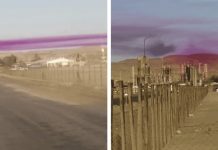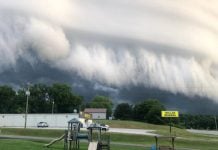Waiting for 2017, residents of Murmansk were surprized by colorful nacreous clouds on December 30, 2016…
Nature’s best fireworks!
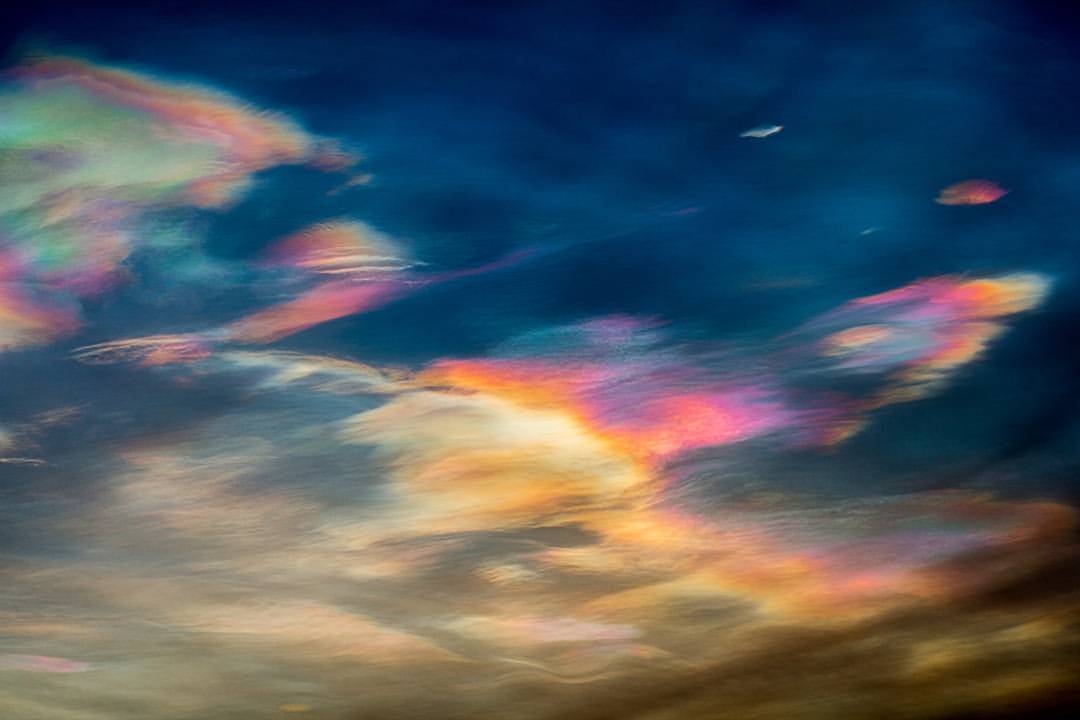
Nacreous clouds are wave clouds. They are often found downwind of mountain ranges which induce gravity waves in the lower stratosphere. Their sheet-like forms slowly undulate and stretch as the waves evolve. The clouds can also be associated with very high surface winds which may indicate the presence of, or induce, winds and waves in the stratosphere.
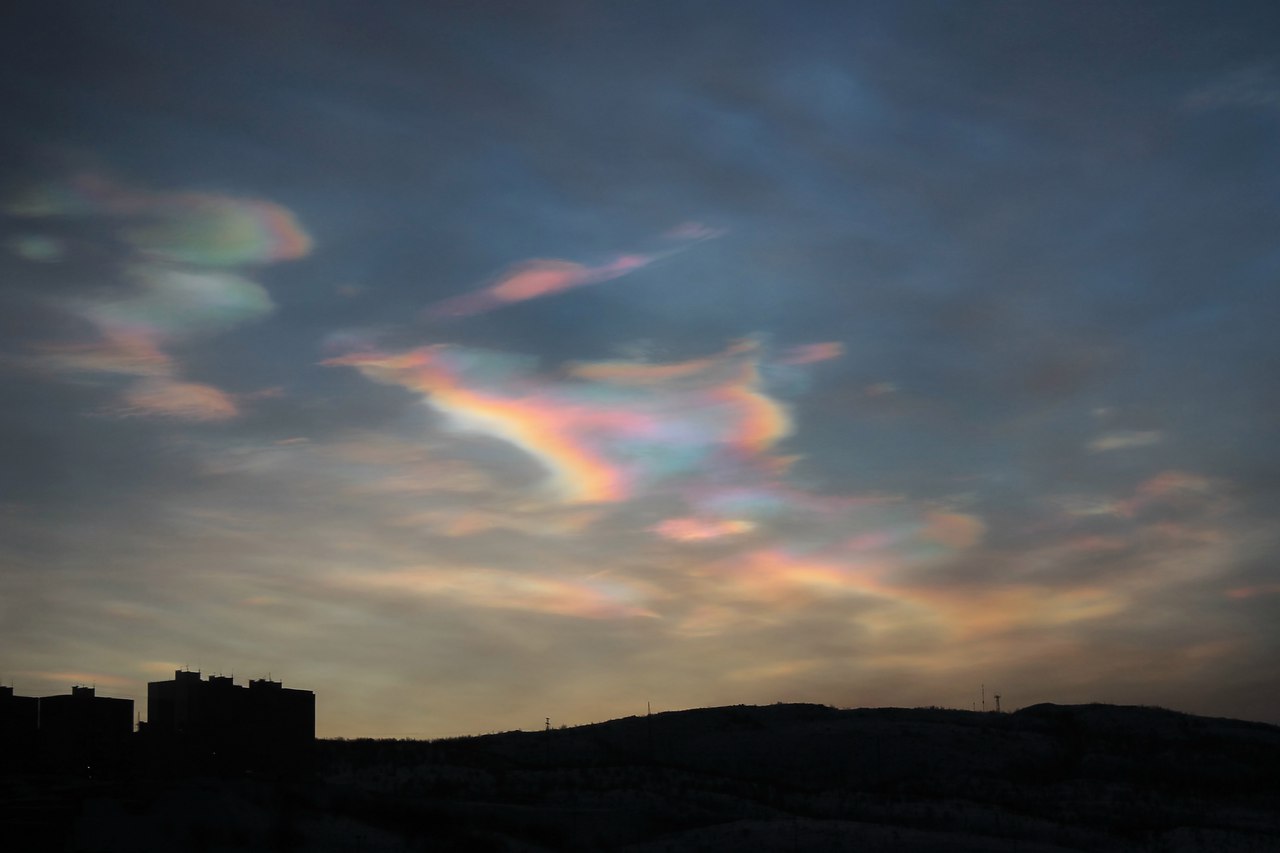
They form at temperatures of around minus 85ºC, colder than average lower stratophere temperatures, and are comprised of ice particles ~10µm across. The clouds must be composed of similar sized crystals to produce the characteristic bright iridescent colours by diffraction and interference.
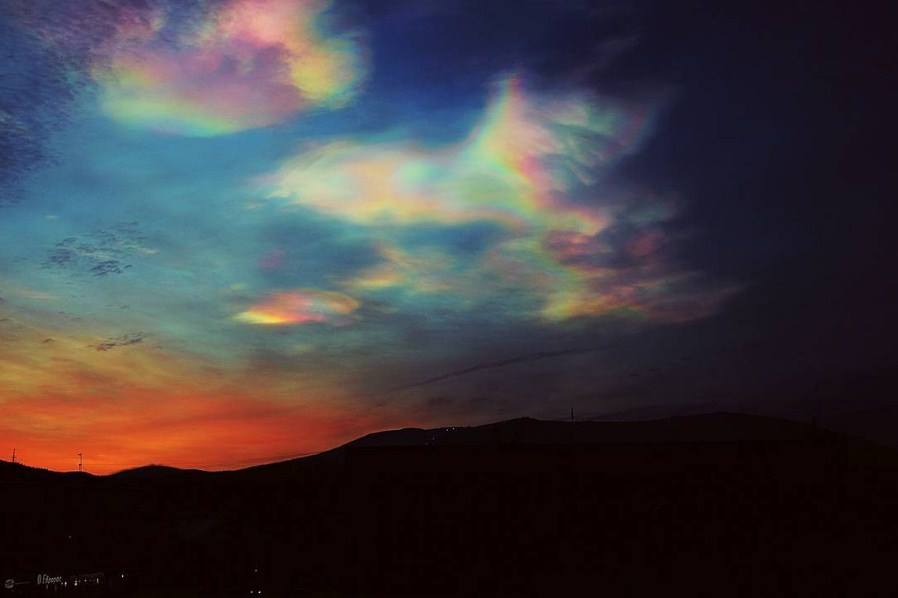
Nacreous clouds are a type of Polar Stratospheric Cloud (PSC).

POLAR STRATOSPHERIC CLOUDS
Type II
Nacreous clouds composed of ice crystals with temperatures of ~minus 85ºC.
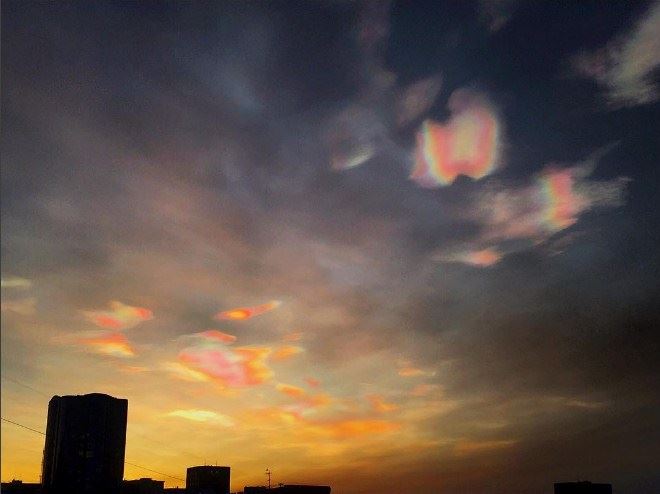
Type I
Less spectacular than nacreous clouds, more diffuse and less bright colours. Sometimes nacreous clouds are embedded in them. Type I clouds are slightly warmer (~ minus 78ºC) than Type II and are composed of exotic solids or liquid droplets.
Type Ia
Crystalline compounds of water and nitric acid – especially NAT, nitric acid trihydrate HNO3.3H2O
Type Ib
Small spherical droplets of a solution of nitric and sulphuric acids.
Type Ic
Small non spherical particles of a metastable nitric acid – water phase
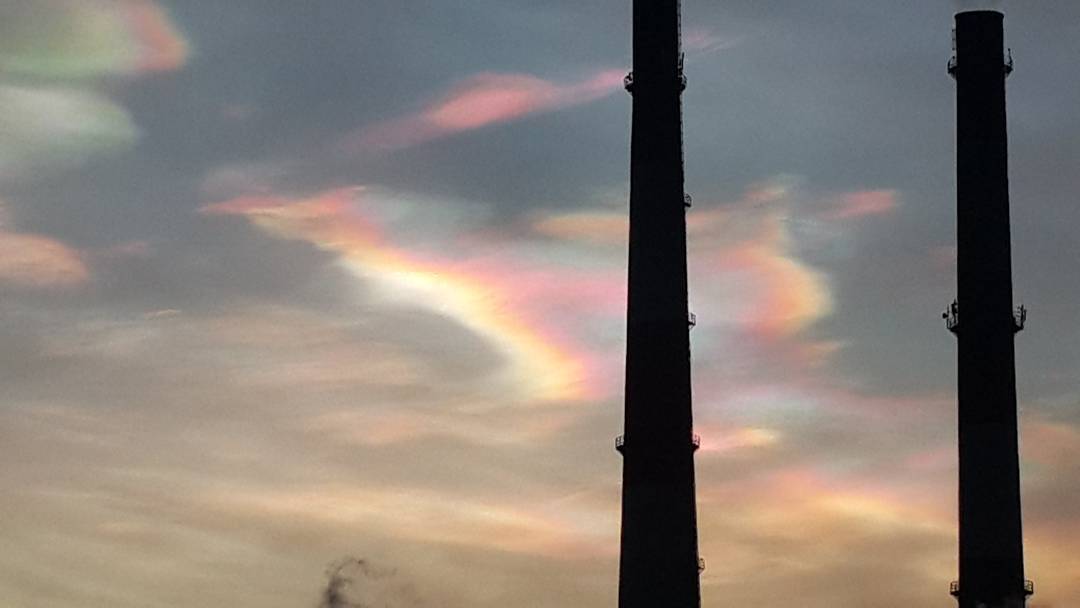
PSCs were long regarded as curiosities and of no real consequence. However, Type I clouds are now known as sites of harmful destruction of stratospheric ozone over the Antarctic and Arctic.
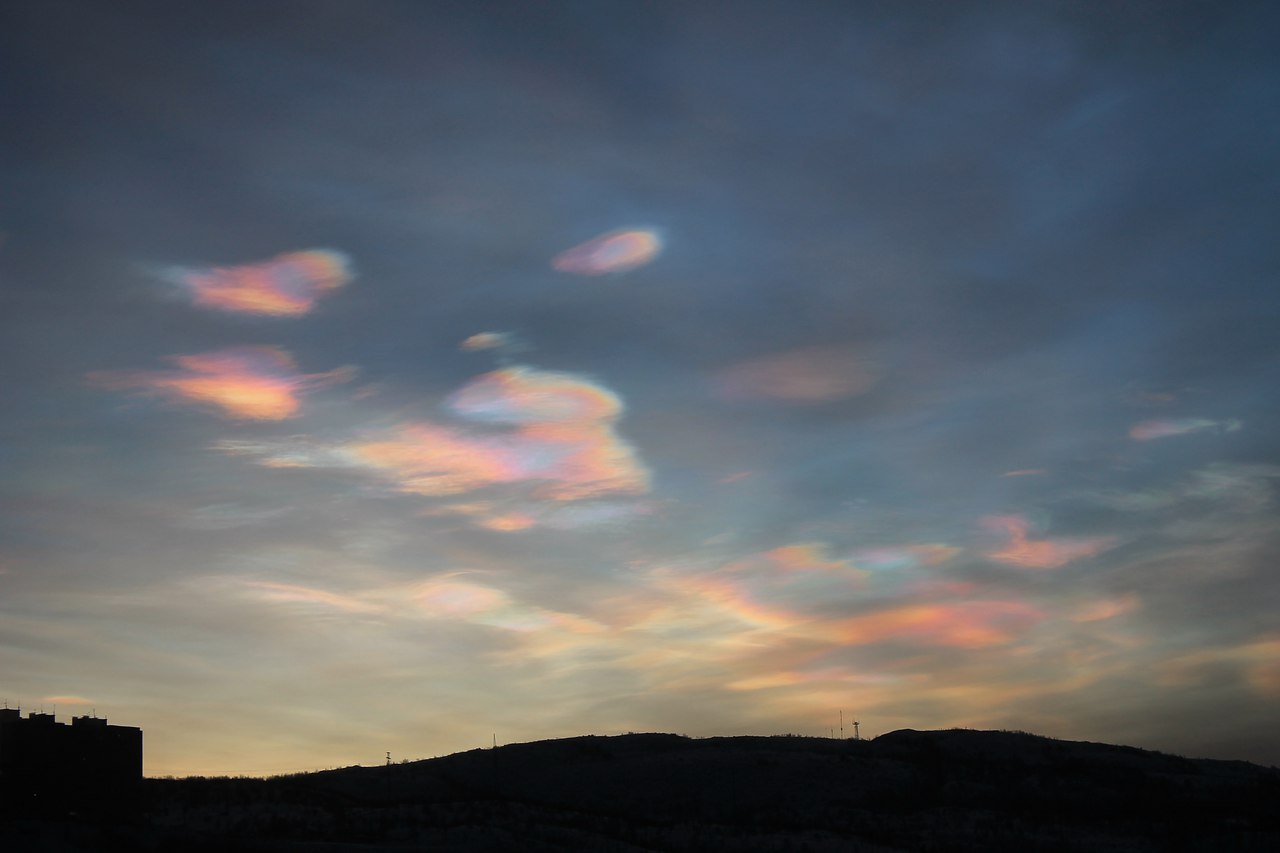
Their surfaces act as catalysts which convert more benign forms of man-made chlorine into active free radicals (for example ClO, chlorine monoxide). During the return of Spring sunlight these radicals destroy many ozone molecules in a series of chain reactions.
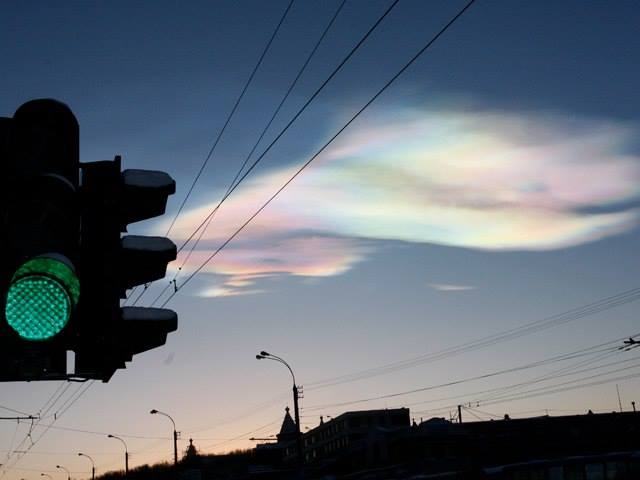
Cloud formation is doubly harmful because it also removes gaseous nitric acid from the stratosphere which would otherwise combine with ClO to form less reactive forms of chlorine.
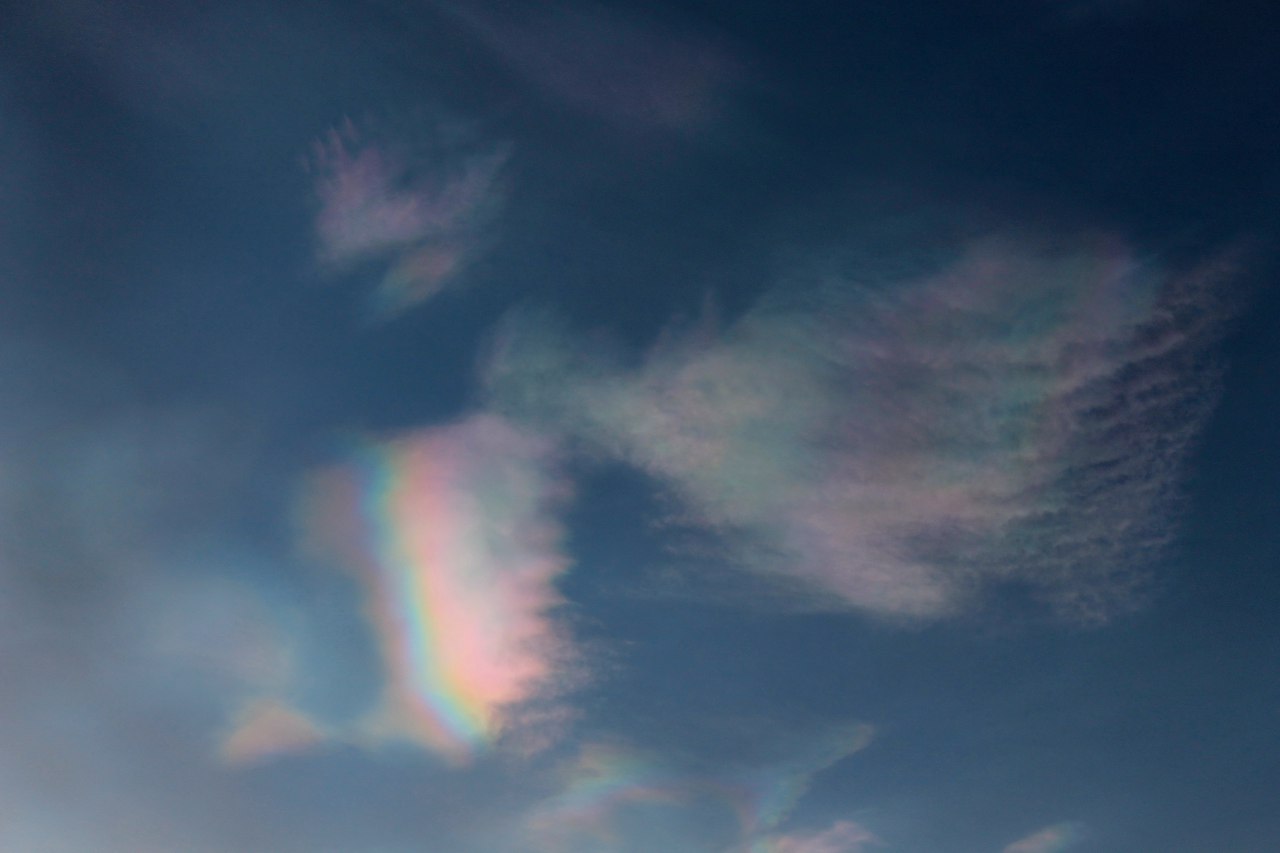
Beautiful destructive sky phenomenon!







